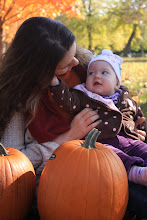Know Your Plastics
by Dr. Alan Greene
Plastics are everywhere. Some are eco-friendly and appear to be very safe for kids. Most are made from non-renewable petroleum, much of which needs to be imported. Some plastics cause dangerous pollution during manufacturing, and some contain chemicals suspected of causing harm – especially to kids.
You might choose to replace plastic water bottles with a refillable stainless steel version, or to replace plastic toy blocks with wooden ones, plastic teething chews with organic cotton, or plastic jars with glass. Even so, you’ll probably find yourself using a lot of plastic.
To select the plastics that are best for your children and for the environment, get to know the easy-to-identify plastic recycling codes you’ll usually find on the underside of the bottle or packaging. Look for these numbers and symbols before you buy. The safer plastic choices are coded 1, 2, 4, and 5. Try to avoid 3, 6, and most plastics labeled with number 7.
Code 1: PET or PETE (polyethylene terephthalate). You’ll most commonly see this in the thin, clear plastic of bottled water (or bottled cooking oil, peanut butter, soda, etc.). It’s appears safe for single use, but these bottles should not be reused, refilled, or heated. This plastic can be recycled once into new secondary products, such as textiles, parking lot bumpers, or plastic lumber.
Code 2: HDPE (high-density polyethylene). This is the thicker, milkier or opaque plastic found in milk and water jugs, juice bottles, detergent, shampoo, and motor oil containers, and toys. Unlike #1, these are safe to refill and reuse, even though they may not look as snazzy as #1 or #7. Recyclable once into products similar to those for # 1 plastics.
Code 3: PVC (polyvinyl chloride). Found in bibs, mattress covers, squeeze bottles, cling wrap, some peanut butter jars, and a few other food and detergent containers. The manufacture of PVC releases dioxin into the environment, a potent carcinogen that accumulates in animals and in us. It may also contain phthalates, chemicals used, among other things, to soften plastics. Some phthalates are hormone disruptors that have been linked to possible reproductive problems and birth defects, and even to smaller penis size in boys. PVC workers have higher cancer rates. May be discarded at the recycling plant. AVOID #3!
Code 4: LDPE (low-density polyethylene). Found in soft, flexible plastics such as those used in grocery story bags, plastic wrap, dry cleaning bags, shopping bags, and garbage bags. One of the safer plastics – but recycle, don’t throw away. Many of these bags could be better replaced with reusable bags, especially when shopping.
Code 5: PP (polypropylene). Found in hard but flexible plastics, such as those used for ice cream and yogurt containers, drinking straws, syrup bottles, salad bar containers, and diapers. One of the safer plastics – but recycle, don’t throw away.
Code 6: PS (polystyrene). Found in rigid plastics such as opaque plastic spoons and forks, and in Styrofoam, such as those found in coffee cups and meat trays. These plastics can leach styrene, a known neurotoxin with other negative health effects. AVOID #6.
Code 7: Other (including polycarbonate, nylon, and acrylic). This is a grab bag symbol. It includes polycarbonate, an important source of the endocrine disruptor BPA, and found in most baby bottles. Polycarbonate is also common in 5-gallon water bottles, sports bottles, clear plastic cutlery, and in the lining of food and formula cans.
But code 7 also includes some of the newer, compostable green plastics, such as those made from corn, potatoes, rice, or tapioca. (I wish they would make a code 8 for these!) AVOID # 7, unless it is labeled as one of these new bio-based plastics.
Whatever plastics you choose, when microwaving food or drink, try to opt for glass or ceramic containers instead of plastic, where possible, and wax paper instead of plastic wrap.
This year two of the largest toy retailers have announced new guidelines to cut kids exposure to phthalates in their toys. Wal-Mart and Toys R Us (and their Babies R Us stores) have taken the lead in requiring independent third-party lab testing of each batch of toys imported to the US for sale in their stores to slash kids’ risk of being exposed from their toys. I hope more companies (and state and national governments) will take similar steps. In the meantime, Know Your Plastics!
Source: Healthy Child Healthy World
and Plastics 101 on The Softlanding.
Monday, November 10, 2008
Subscribe to:
Post Comments (Atom)


No comments:
Post a Comment